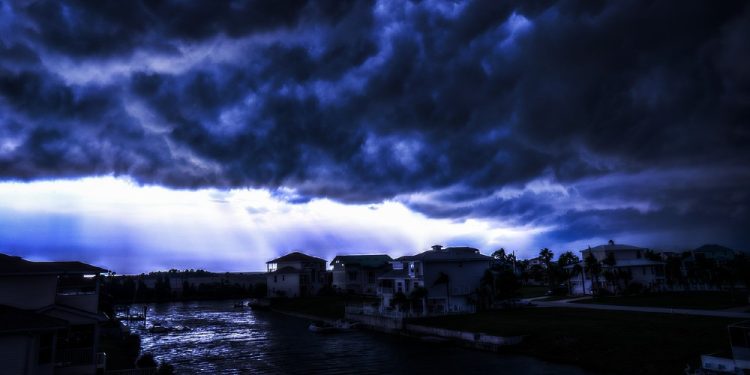Why are so many historic natural disasters suddenly hitting us one after another? For a moment, I would like for you to think about what we have seen over just the past several weeks. The wildfires on Maui were the deadliest in the entire history of the United States. Then Hilary absolutely pummeled southern California, Idalia caused immense damage along the Gulf Coast of Florida, and now Hurricane Lee is threatening the east coast. If it actually hits a major population center in the Northeast, we could see immense devastation. Meanwhile, large earthquakes are striking without warning all over the globe. On Friday night at 11:11 local time, a highly destructive magnitude 6.8 earthquake hit Morocco…
On Friday, around 11:11 p.m. local time, a magnitude 6.8 earthquake exploded through the High Atlas mountains in Morocco, not far from the populous city of Marrakesh. People as far away as Spain and Portugal felt a strange vibration ripple beneath their feet. But millions in Morocco felt the planet shake and splinter, jolt and disintegrate, before thousands of the most unfortunate were greeted by tectonic rage. At least 2,100 people are dead, and that number is expected to rise. According to the Euro-Mediterranean Seismological Center, an NGO, several aftershocks convulsed through the area earlier today.
This was a really big one. It was clearly felt by countless people in both Spain and Portugal.
The final death toll will not be known for quite a while, but it is rising with each passing hour.
According to the USGS, this was the biggest earthquake that Morocco has experienced in more than 100 years…
The US Geological Survey said the quake had a preliminary magnitude of 6.8 when it hit at 11:11 p.m. (2211 GMT), with shaking that lasted several seconds. The US agency reported that a magnitude-4.9 aftershock hit 19 minutes later and that the earthquake was the largest to hit Morocco in more than 100 years.
The epicenter of Friday’s tremor was high in the Atlas Mountains, about 40 miles south of Marrakech. It was also near Toubkal, the highest peak in North Africa, and Oukaimeden, a popular Moroccan ski resort.
In the city of Marrakesh, tall buildings violently crumbled to the ground as the ground shook with great force…
https://www.youtube.com/watch?v=BXxdESqRwmE
When something like this happens, your life can be turned upside down in a single moment.
Can you imagine what it must be like to lose your home and your family without any warning whatsoever?…
In mere moments, entire neighborhoods vanish. Entire families are exterminated. Some may be entombed under the ruins of the place in which they grew up or raised their children or reunited with old friends. Survivors of the cataclysmic back-to-back earthquakes in Turkey and Syria this February have told reporters what happens next:. People trapped in the rubble wait in purgatory, wondering which of their loved ones may still be breathing; many perish inside these hollows of concrete, mud, silt, metal, and brick. And those who aren’t physically trapped, who just happened to be far from any susceptible buildings, are still caught in a desperate dread, questioning the reality that seemed immovable just a moment ago. What just happened? Do I still have a home? Is my daughter okay? Is my dog still alive? Where is my wife? I just saw her; we just spoke; she was right there.
The survivors in this region of Morocco need our prayers.
This is a country that has not seen a tragedy like this in any of our lifetimes, and the royal family has just declared “three days of national mourning”…
Morocco’s royal family declared three days of national mourning after the deadly earthquake.
‘Three days of national mourning have been decided, with flags to fly at half-mast on all public buildings,’ said a statement published by the official MAP news agency after King Mohamed VI chaired a meeting to discuss the disaster.
Of course this was not the only major quake that we have seen in the past few days.
On Friday, a magnitude 5.0 earthquake hit northern California…
A magnitude 5.0 earthquake was recorded in Northern California Friday morning. The quake was recorded at 10:24 a.m. about 7.5 miles west-southwest of the community of Fall River Mills in Shasta County,
at a depth of over nine miles, according to the U.S. Geological Survey. The area is about 50 miles northeast of Redding, and about 290 miles north of Sacramento.
According to the USGS Felt Report, close to two hundred people had reported feeling shaking in the first half hour after the quake, with the majority of the reports coming from Shasta County, and a few reports from as far away as Chico and some communities in Oregon close to Medford.
As I keep reminding my readers, it is just a matter of time before “the Big One” hits the state. Also on Friday, a magnitude 5.6 earthquake struck Mexico…
A magnitude-5.6 earthquake occurred near the coast of Jalisco State at around 09:53 Sept. 8. The epicenter was about 9 km (6 miles) northwest of Emiliano Zapata. The tremor occurred at a depth of about 35 km (22 miles), and moderate shaking was probably felt in the immediate vicinity of the epicenter, with lighter shaking likely felt in other parts of Jalisco and Colima states.
Interestingly, this earthquake came just two days after the Mexican Supreme Court legalized abortion nationwide…
Reports over the last year suggest some abortion-hoppers are also looking beyond US borders. They’ve been seeking out help in Mexico since as early as July last year. Now, Mexico is set to become an even more attractive destination.
This week, the Mexican supreme court decriminalized decriminalized abortion across the country. The apex court was unequivocal in saying that “the legal system that penalizes abortion in the federal penal code is unconstitutional given it violates the human rights of women and people with the ability to gestate.”
Then on Saturday, a magnitude 6.0 earthquake hit off the coast of Palu, Indonesia, and a magnitude 6.6 earthquake struck not too far from New Zealand. Meanwhile, massive storms continue to rage all over the planet.
This year, for the very first time ever recorded, “storms have reached top-tier Category 5 strength in every tropical ocean basin in the same year”.
And now here comes Hurricane Lee.
Lee made headlines all over the globe on Thursday when it suddenly strengthened from a Category 1 storm to a Category 5 storm…
Hurricane Lee is set to send huge rip tides across the East Coast as soon as this weekend, even as meteorologists are still unsure if the eye of the storm will make landfall.
Severe surges could generate waves up to 10 feet tall crashing into the eastern seaboard on Sunday, risking flash flooding and structural damage.
The storm system alarmed forecasters after it escalated from a Category 1 to Category 5 hurricane overnight Thursday, as its wind speeds soared from 80mph to over 160mph in a matter of hours.
Can you imagine what such a storm would do to New York City or Boston if a direct hit happened?
Let us hope that such a scenario can be avoided. But as I have been relentlessly warning, we are entering a period of great instability when our planet will be hit by one major disaster after another.
What we have experienced so far is just the tip of the iceberg, and so I would encourage all of you to brace yourselves for the tumultuous months and years that are ahead.
Michael’s new book entitled “End Times” is now available in paperback and for the Kindle on Amazon.com, and you can check out his new Substack newsletter right here. Article cross-posted from The Economic Collapse Blog.






How much of this weather is because of the US government messing with the weather with geo engineering? Can we say for certain this weather isn’t being created by the climate change cult to suck more cash from the US treasury while scaring the people with the end of the world talk?